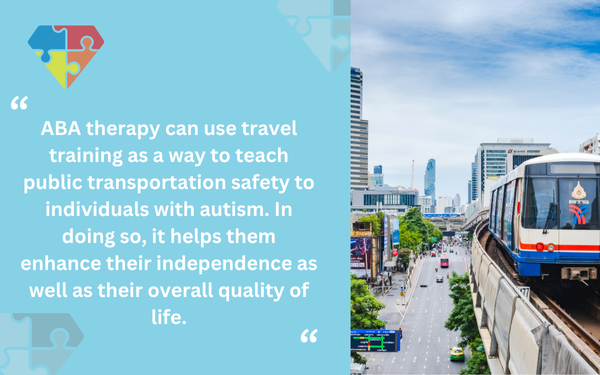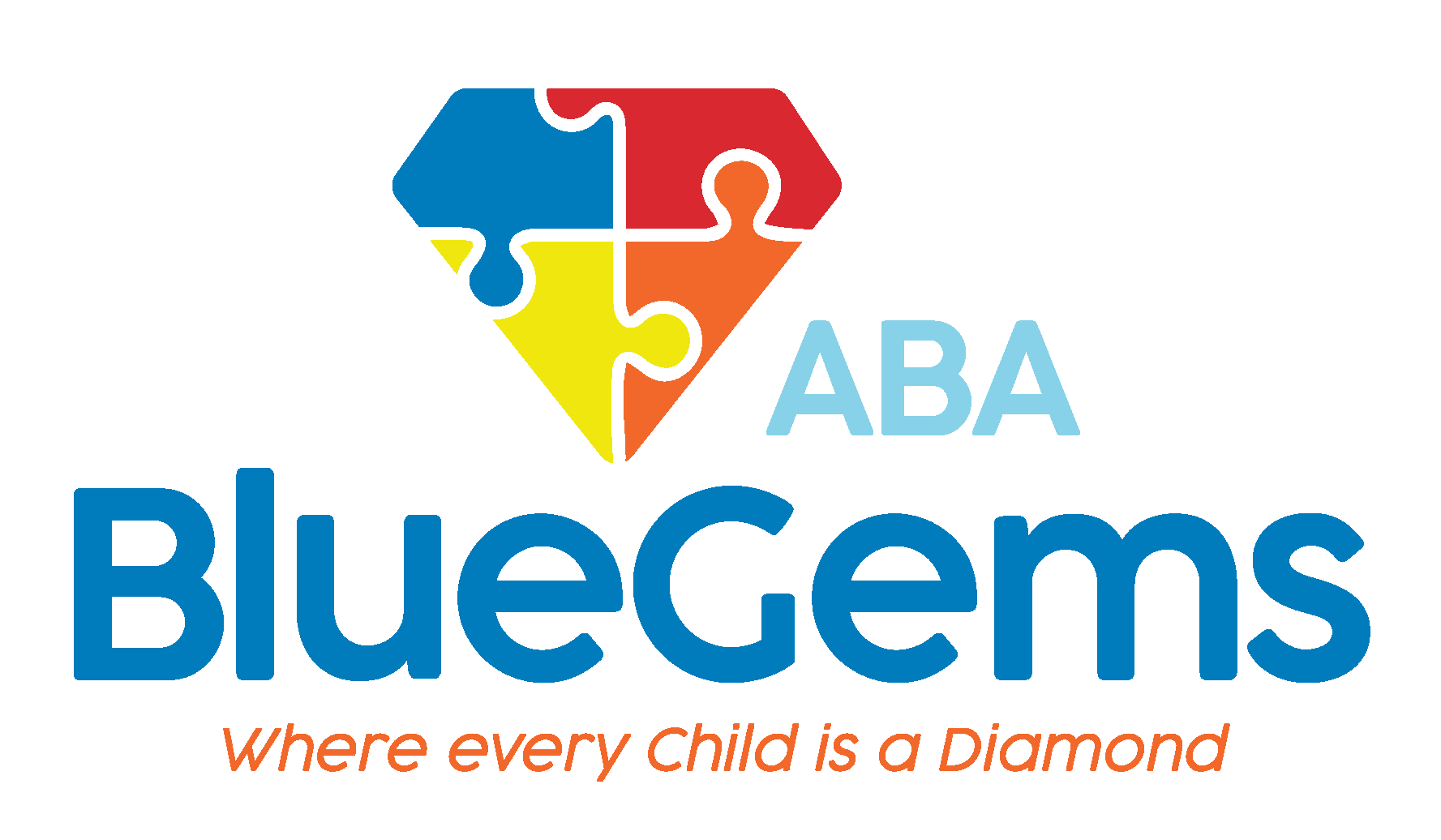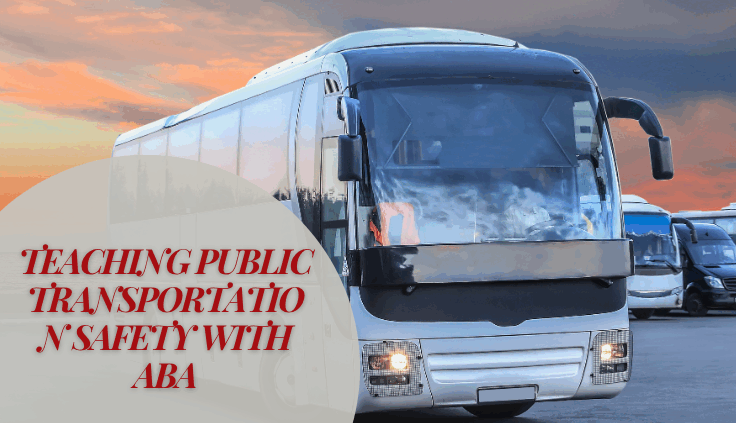Teaching Public Transportation Safety with ABA
There are many skills that individuals need to learn if they want to live independently. Many of us take some of these skills for granted as we get older, but without them, it might make living on our own, holding a job and navigating through daily life difficult.
One such skill is how to take public transportation and be safe when doing so. It’s not something that comes inherently to us, but rather, we combine various skills we’ve learned over our lifetime to figure it out.
For children with autism spectrum disorder (ASD), navigating public transportation in a safe manner can be a challenge. Yet, learning this skill could be very important, especially if they have trouble driving or if driving is not an option, such as if they live in a crowded city or it’s simply not affordable.
In this article, we’ll describe how applied behavior analysis, or ABA therapy, can teach public transportation safety and other vital travel skills.
Table Of Contents
Why is Public Transportation Safety Important?
Being mobile is one of the biggest components of independent living. When a person is able to drive or take public transportation, they are able to move around to where they want, when they want and for whatever reason they want.
Without these skills, a person would be completely reliant on others for much of their daily assistance. It would be hard to get and hold a job, attend advanced school in some circumstances, and make and maintain meaningful relationships.
Some people will use public transportation more than others, based upon a number of factors, including where they live, where their job or school is located and what their financial situation is.
Individuals with autism may have a tougher time learning to drive than their neurotypical peers, which makes learning how to navigate public transportation safety all the more important.
| Skill Category | Specific Skill | Teaching Strategy | ABA Technique |
|---|---|---|---|
| Planning & Navigation | Reading transit schedules | Direct instruction & modeling | Task Analysis |
| Route Management | Transferring between lines | Visual aids, step-by-step guides | Chaining |
| Safety Awareness | Recognizing threats | Role-playing scenarios | Reinforcement & Prompting |
| Ticketing & Access | Purchasing & using tickets | Repetition & positive feedback | Task Analysis |
| Boarding & Deboarding | Finding the right stop | Guided practice | Chaining |
Can ABA Therapy Teach Public Transportation Safety?
ABA therapy can use travel training as a way to teach public transportation safety to individuals with autism. In doing so, it helps them enhance their independence as well as their overall quality of life.

It makes things such as social interactions, education and employment more accessible. It also promotes self-reliance, self-confidence and autonomy.
ABA therapy can create targeted programs based on travel training so that individuals on the autism spectrum can develop the skills that are necessary to navigate public transportation safely, no matter what type of transportation they need.
What is Taught During Travel Training?
Travel training involves teaching many important and basic aspects of public transportation.
This includes planning routes, understanding schedules and using maps. It also includes learning how to board and deboard trains and buses, how to transfer between one line to the next, and how to navigate complicated subway systems.
Integrated into all of these lessons are ways in which individuals with autism can pay attention to their personal safety when they’re on public transportation, such as recognizing potential threats and reacting to them.
What Strategies Does ABA Therapy Use for Travel Training?
ABA therapy will use various strategies to teach travel training to individuals with ASD.
Task analysis is one of the fundamental strategies in ABA therapy, and it’s used quite often in travel training. This involves breaking complex skills down into much smaller steps, which allows the information to be more manageable to patients.
This allows the patient to learn each of the basic travel skills one at a time, mastering each before moving onto the next. Task analysis is a very structured approach to learning that helps to promote public transportation safety by ensuring that the individual completely understands each step involved.
Another popular approach in ABA therapy is called chaining. This is the process of linking all these individual steps together so that the individual is able to complete the entire process.
For instance, when an individual is learning how to use a mode of public transportation, they’ll practice how to read a schedule, how to arrive at the train station, how to purchase a train ticket, how to use the ticket to gain access to the subway, how to go the proper place to wait for their train, how to board their train when it arrives, how to get off the train at the proper stop, and how to navigate out of the subway.
Each of these steps will be taught individually through task analysis, and then chained together so that the individual can master the entire behavior appropriately and safely.
Blue Gems ABA Teaches Individuals with Autism Practical Life Skills
To live independently, individuals must learn many practical life skills. One of those skills is navigating public transportation safely.
At Blue Gems ABA, our team of experienced therapists can teach public transportation safety to our patients using many ABA therapy strategies. We will build a customized treatment plan that’s based on the individual’s unique strengths, challenges and preferences so that they can learn more effectively.
To learn more, please contact us today.




